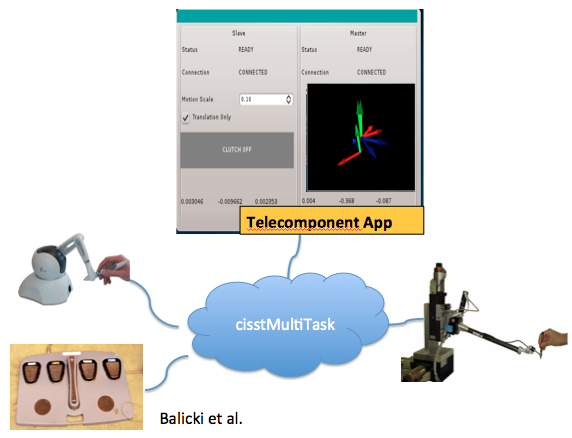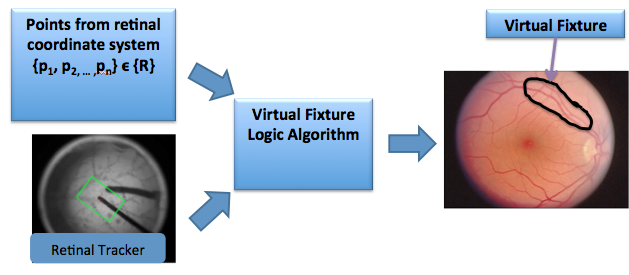Contact Us
CiiS Lab
Johns Hopkins University
112 Hackerman Hall
3400 N. Charles Street
Baltimore, MD 21218
Directions
Lab Director
Russell Taylor
127 Hackerman Hall
rht@jhu.edu
Last updated: May. 18
Microsurgery presents an array of problems. For instance, current methodologies of Eye Surgery requires freehand manipulation of delicate structures without haptic feedback. On top of this limitation, Eye Surgeons experience involuntary hand tremor, fatigue, poor visual cues, and low tactile sensation. Moreover, Surgeon training is limited. There exists no transition between cadaver surgery and live human surgery. In this project, we focus on introducing new features to the Eye Robot that serve to not only further the development of solving these aforementioned problems, but to also provide a framework for a smoother training process for upcoming Eye Surgeons through the use of Telemanipulation and Telestration.
Retinal diseases are becoming a common problem in the world, and they are a leading cause for blindness. Since the eye is one of the most fragile organs in the body, it requires extreme care before, during and after the surgery. The most frequent indications for retinal surgery include retinal detachment, vitreous hemorrhage, macular puckers and holes and diabetic retinopathy. Success rates of the surgery highly depend on the surgical techniques and skills. Surgical challenges:
In order to address these challenges, The Johns Hopkins University CIIS lab has been developing a computer integrated Surgical Assistant Workstation (SAW). However there is no such system that is dedicated to train a new surgeon or allowing multiple surgeons to work cooperatively.
Telemanipulation
Telemanipulation means manipulating a robot using a master control system. It allows us to control a robot remotely. In our system we will be controlling the stead hand eye robot (slave) via Phantom omni (master). This incorporation will be able to be used for many purposes like educating new surgeons or multiple surgeon incorporation for a single surgery. Since there is no such system that can help a new surgeon to train himself, using telemanipulation, an experienced surgeon can keep eye on a new surgeon to make sure that he is doing everything in a proper way.
Telestration
Telestration means freehand drawing with 3D display. This system will be used for many purposes like intraoperative communication between surgeons, education new surgeons, defining virtual fixtures. In this case, while a surgeon is controlling the steady hand eye robot, another surgeon will be using Phantom Omni. While using the Omni, a surgeon will be able to draw an area on the 3D display, for communication or for defining virtual fixtures.
Currently there is a rough prototype for telemanipulation, however there is a problem on the rotations which leads the robot move to a undesired position. Also, there is an application for telestreoviewer and retina tracker. The specific aims of the project can be listed as below:
Technical Approach: Telemanipulation
Here is a diagram indicating the way that the teleopcomponent app connects to other system components.

The basis of telemanipulation lies in a “mimic” algorithm. The position of the Omni at Time1 and Time2 are considered, the delta is computed, and the Eye Robot is then moved with those delta values:
Technical Approach: Telestration
The steps for telestration are indicated in the following diagram. Note the following steps:
Once we have the points of the Omni in the Robotic coordinate system, we can develop virtual fixtures as follows. We can create a 3 dimensional space defined by the Omni in the Robotic coordinate system. Since we know the position of the tool from the Eye Tracker, we can then determine if, at any point, the tool of the Robot is within the allowed virtual fixture. The diagram below indicates this process:

Here give list of other project files (e.g., source code) associated with the project. If these are online give a link to an appropriate external repository or to uploaded media files under this name space.